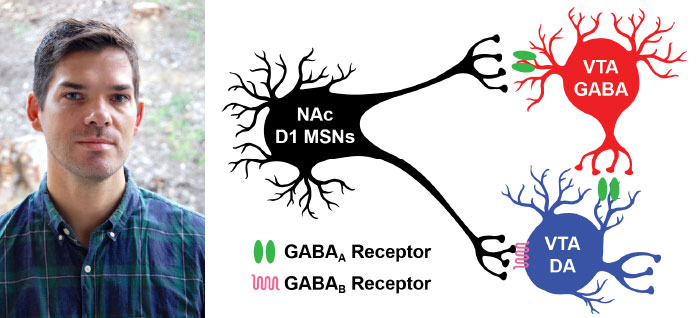Hot Off the Press! – March 2017
Edwards, Nicholas J; Tejeda, Hugo A; Pignatelli, Marco; Zhang, Shiliang; McDevitt, Ross A; Wu, Jocelyn; Bass, Caroline E; Bettler, Bernhard; Morales, Marisela; Bonci, Antonello
Circuit specificity in the inhibitory architecture of the VTA regulates cocaine-induced behavior. Journal Article
In: Nat Neurosci, vol. 20, no. 3, pp. 438–448, 2017, ISSN: 1546-1726 (Electronic); 1097-6256 (Linking).
@article{Edwards2017,
title = {Circuit specificity in the inhibitory architecture of the VTA regulates cocaine-induced behavior.},
author = {Nicholas J Edwards and Hugo A Tejeda and Marco Pignatelli and Shiliang Zhang and Ross A McDevitt and Jocelyn Wu and Caroline E Bass and Bernhard Bettler and Marisela Morales and Antonello Bonci},
url = {https://www.ncbi.nlm.nih.gov/pubmed/28114294},
doi = {10.1038/nn.4482},
issn = {1546-1726 (Electronic); 1097-6256 (Linking)},
year = {2017},
date = {2017-03-01},
journal = {Nat Neurosci},
volume = {20},
number = {3},
pages = {438--448},
address = {Intramural Research Program, National Institute on Drug Abuse, US National Institutes of Health, Baltimore, Maryland, USA.},
abstract = {Afferent inputs to the ventral tegmental area (VTA) control reward-related behaviors through regulation of dopamine neuron activity. The nucleus accumbens (NAc) provides one of the most prominent projections to the VTA; however, recent studies have provided conflicting evidence regarding the function of these inhibitory inputs. Using optogenetics, cell-specific ablation, whole cell patch-clamp and immuno-electron microscopy, we found that NAc inputs synapsed directly onto dopamine neurons, preferentially activating GABAB receptors. GABAergic inputs from the NAc and local VTA GABA neurons were differentially modulated and activated separate receptor populations in dopamine neurons. Genetic deletion of GABAB receptors from dopamine neurons in adult mice did not affect general or morphine-induced locomotor activity, but markedly increased cocaine-induced locomotion. Collectively, our findings demonstrate notable selectivity in the inhibitory architecture of the VTA and suggest that long-range GABAergic inputs to dopamine neurons fundamentally regulate behavioral responses to cocaine.},
keywords = {},
pubstate = {published},
tppubtype = {article}
}
Afferent inputs to the ventral tegmental area (VTA) control reward-related behaviors through regulation of dopamine neuron activity. The nucleus accumbens (NAc) provides one of the most prominent projections to the VTA; however, recent studies have provided conflicting evidence regarding the function of these inhibitory inputs. Using optogenetics, cell-specific ablation, whole cell patch-clamp and immuno-electron microscopy, we found that NAc inputs synapsed directly onto dopamine neurons, preferentially activating GABAB receptors. GABAergic inputs from the NAc and local VTA GABA neurons were differentially modulated and activated separate receptor populations in dopamine neurons. Genetic deletion of GABAB receptors from dopamine neurons in adult mice did not affect general or morphine-induced locomotor activity, but markedly increased cocaine-induced locomotion. Collectively, our findings demonstrate notable selectivity in the inhibitory architecture of the VTA and suggest that long-range GABAergic inputs to dopamine neurons fundamentally regulate behavioral responses to cocaine.

